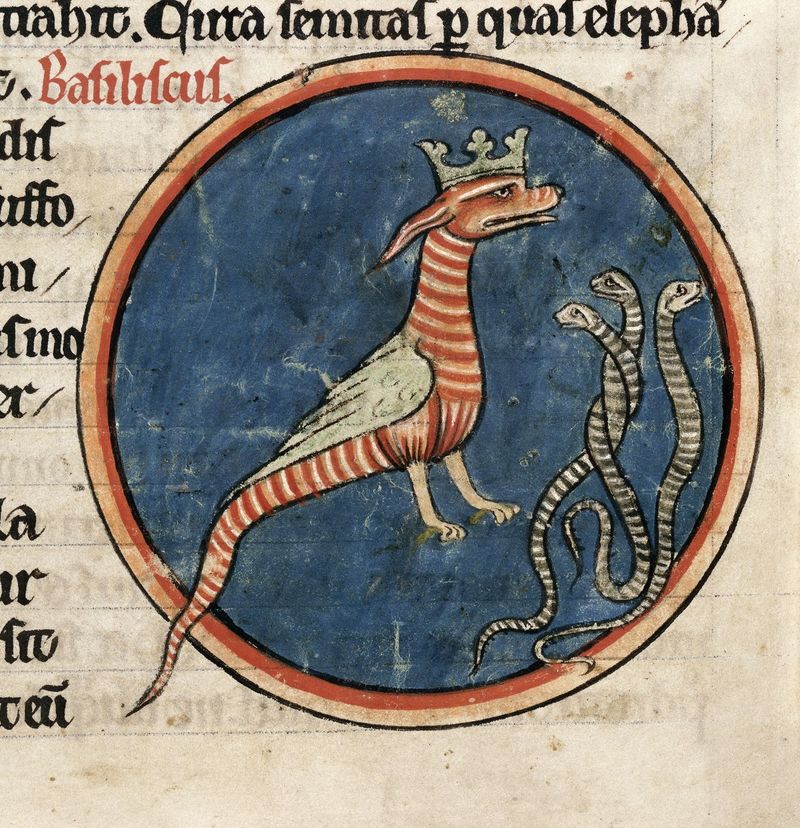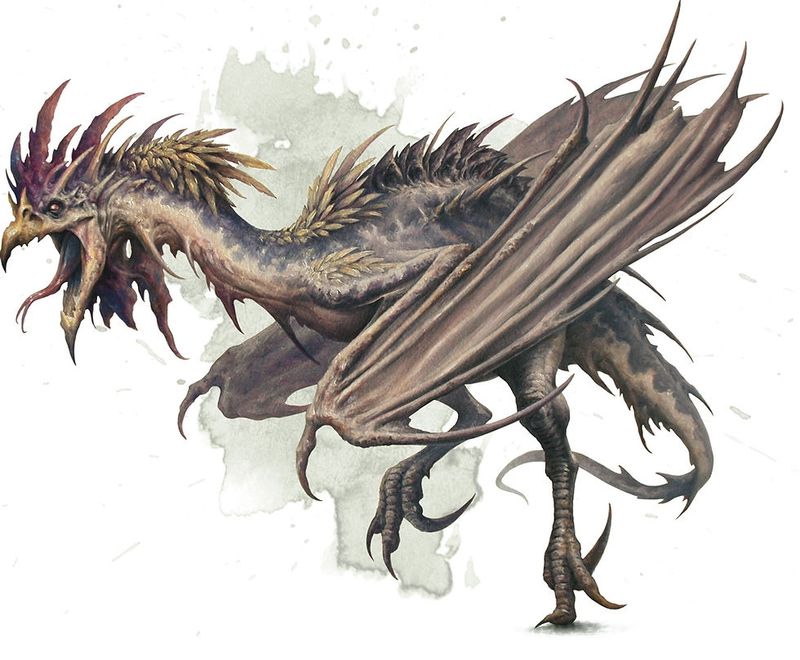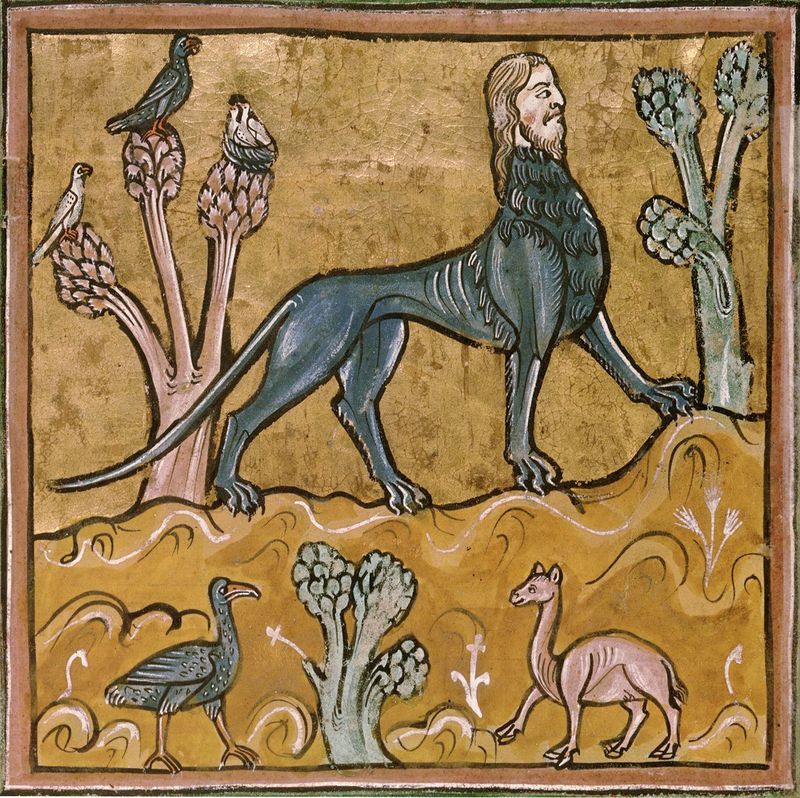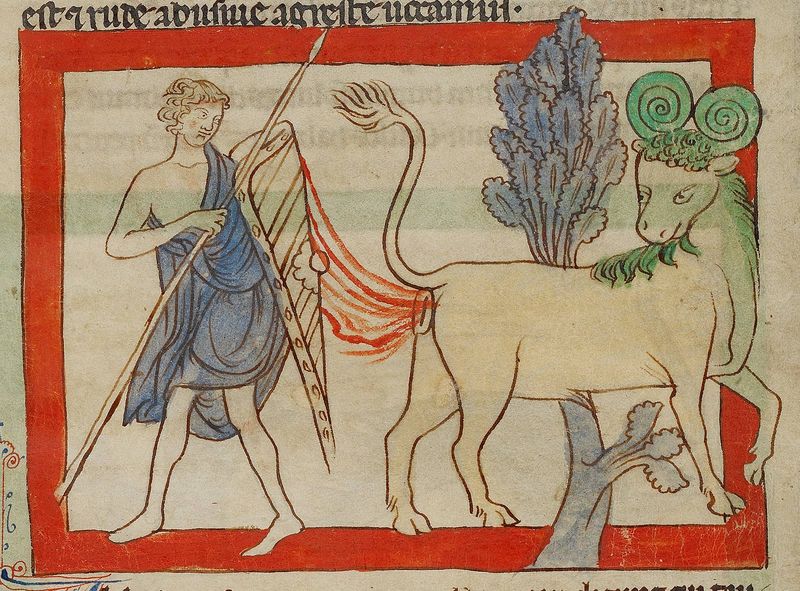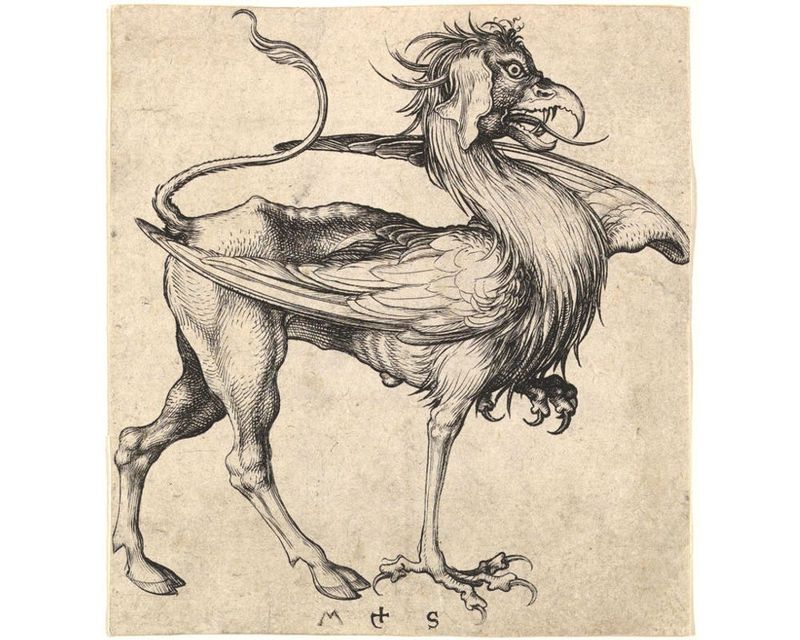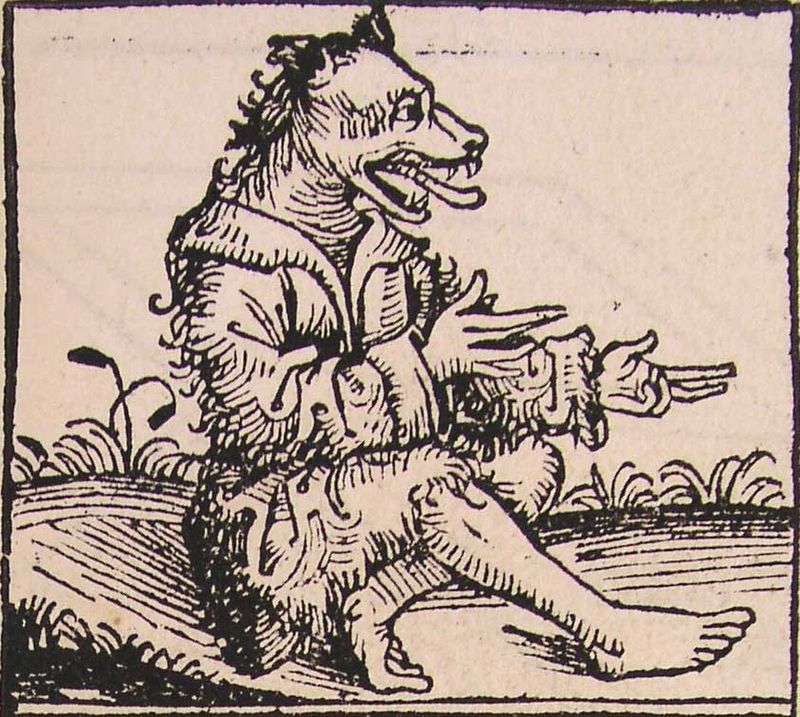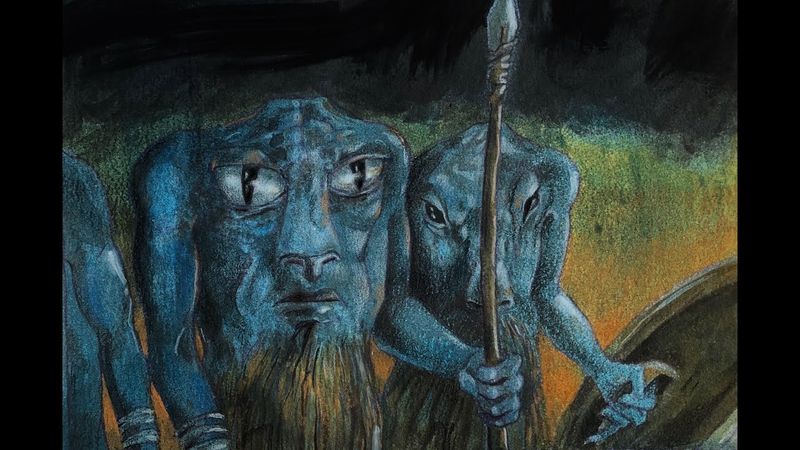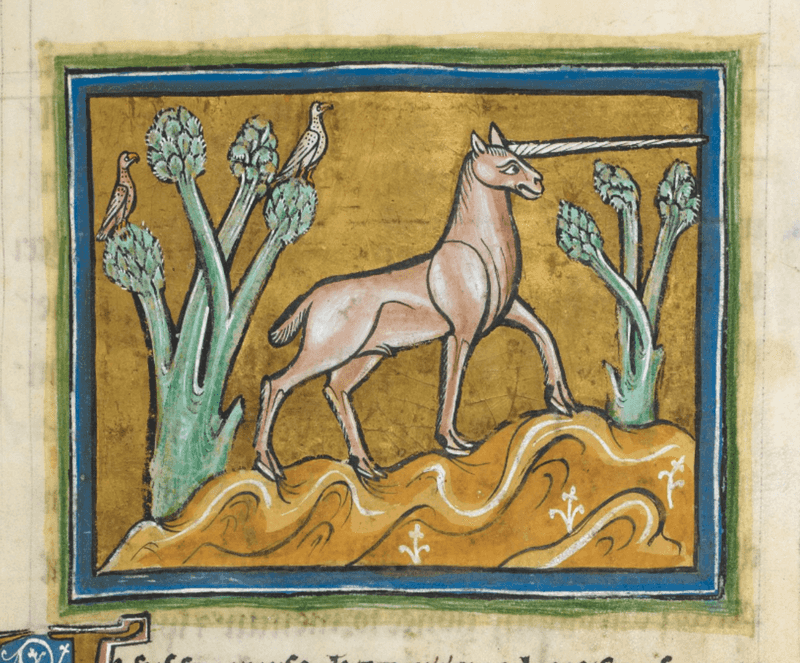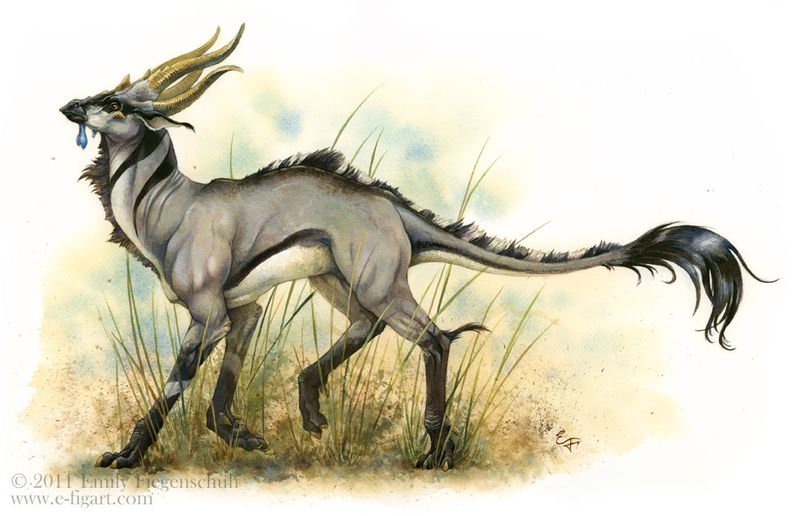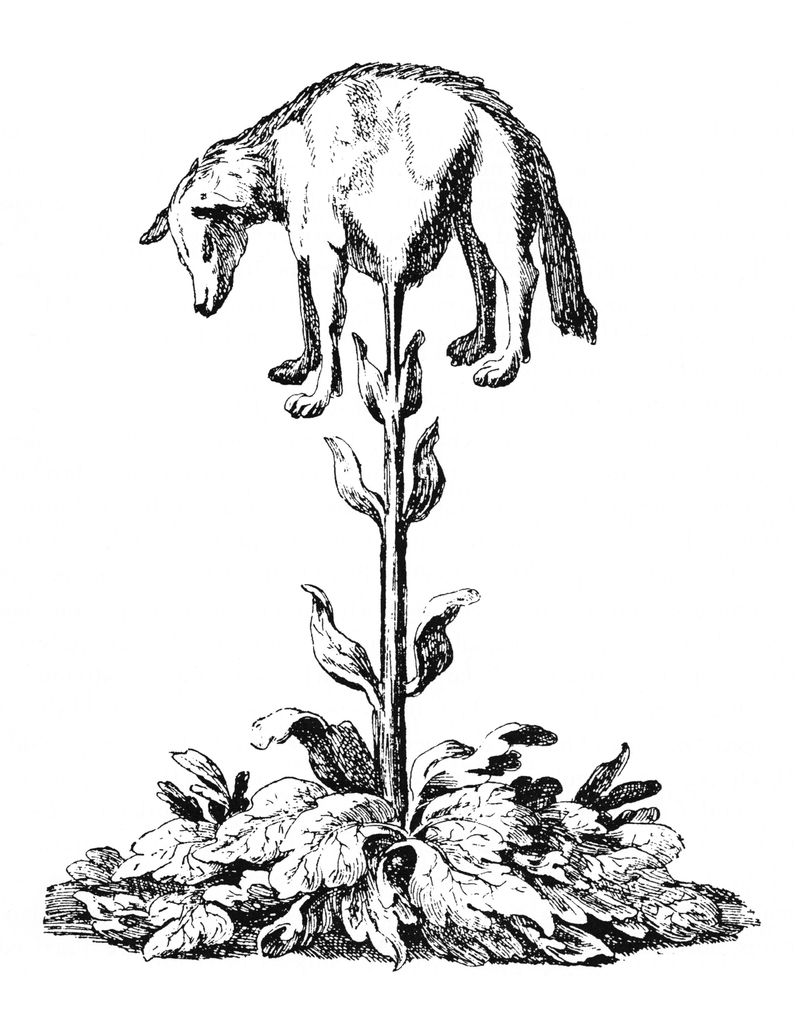Explore the fascinating world of medieval mythology and discover the bizarre creatures that captured the imaginations of people in the Middle Ages.
From hybrid beasts to mythical plant-animals, these creatures were more than figments of fantasy; they represented allegories of morality, nature, and the unknown boundaries of the world.
This post delves into ten of the most intriguing mythical beings, each holding unique significance and captivating imagery.
1. Basilisk
The basilisk, a creature of myth, is depicted as a serpent with the crest of a rooster. Its gaze or breath was said to be lethal, capable of killing with a single look. This beast symbolized deadly sin and moral decay, a common theme in medieval allegories.
The basilisk was feared for its supposed ability to wither landscapes with its presence. In tales, heroes who vanquished the basilisk were celebrated for their purity and bravery.
This creature’s legend served as a reminder of the dangers of unchecked power and the corrupting influence of evil.
2. Cockatrice
Similar to the basilisk, the cockatrice combines features of a rooster and a serpent, often depicted with dragon-like wings. It was believed to embody arrogance, and defeating it required the crow of a rooster or pure virtue.
In medieval lore, the cockatrice’s deadly stare was feared, creating a sense of dread and fascination. This creature’s tale was used to warn against hubris and the perils of pride.
By engaging with its myth, medieval people found a narrative that explained misfortunes and underscored the importance of humility and righteousness.
3. Manticore
The manticore, a legendary creature from Persian folklore, features a lion’s body, a human-like face, and a scorpion’s tail. It was said to be a dangerous predator with a taste for human flesh.
In European bestiaries, the manticore symbolized treachery and the allure of the unknown. Its fearsome depiction warned against the dangers of foreign wonders and the unknown.
By portraying the manticore, medieval artists and writers sought to explore themes of betrayal and the risks inherent in curiosity. The manticore’s image captivated imaginations and fueled tales of adventure.
4. Bonnacon (Bonacon)
The bonnacon appears as a bull-like beast with horns curling inward, making it unable to gore enemies. Instead, it repelled foes by expelling scorching dung, a bizarre yet effective defense.
This creature’s legend warned against deceptive appearances, as it seemed harmless but proved otherwise. It was a metaphor for hidden perils lurking beneath benign exteriors.
In medieval stories, the bonnacon’s tale illustrated cunning and wit over brute strength. By understanding its myth, one could learn the importance of not underestimating seemingly innocuous threats and valuing strategic thinking.
5. Griffin
The griffin, a majestic creature, combines an eagle’s head and wings with a lion’s body. It was revered as a symbol of nobility and vigilance, often appearing in heraldry. Griffins were believed to guard treasure and sacred relics, representing divine protection.
Their image conveyed the strength and courage needed to defend what is precious. In medieval art, griffins depicted the ideal of a noble protector. The tales of griffins inspired awe and admiration, encouraging values of loyalty and honor.
The griffin’s legacy endures as a symbol of guardianship and majesty.
6. Cynocephali
Cynocephali, human-like beings with dog heads, were said to inhabit distant lands. They represented the barbarity and mystery of unexplored regions, evoking both fear and curiosity.
In medieval lore, they illustrated the concept of ‘the other’ and the boundaries of known civilization. By depicting cynocephali, mapmakers and storytellers conveyed the sense of wonder and danger associated with the unknown.
These creatures challenged perceptions of humanity and the familiar, prompting reflection on what it means to be civilized. Their legend served as a bridge between reality and imagination.
7. Blemmyes
Blemmyes, depicted as headless humans with faces on their chests, filled medieval travel tales and maps. They symbolized the strange and unknown lands beyond Europe. Blemmyes embodied the fascination and fear of the unfamiliar, serving as proof of the world’s vastness.
Their image challenged the limits of human understanding and geography. In narratives, Blemmyes were used to explore themes of identity and otherness, questioning the nature of humanity.
By engaging with the myth of Blemmyes, medieval audiences pondered the diverse possibilities of existence and the reach of human exploration.
8. Monoceros
The monoceros, akin to a unicorn, was depicted with an elephant’s feet and a single horn. It symbolized purity and the power of chastity, often associated with Christ in medieval symbolism.
Capturing a monoceros required the lure of a virgin, reflecting themes of innocence and virtue. In bestiaries, the monoceros illustrated the ideals of spiritual purity and the divine.
Its image was used to convey moral lessons and the triumph of goodness over evil. Through its legend, medieval thinkers explored the complex interplay between nature, spirituality, and morality.
9. Yale (Eale)
The yale, or eale, was an antelope-like creature with swiveling horns that allowed for attacks in any direction. It symbolized adaptability and cunning, illustrating how strategy can overcome brute force.
The yale’s tale encouraged the appreciation of wit and intelligence over sheer strength. In medieval lore, this creature’s depiction served as a metaphor for dynamic thinking and resilience.
By understanding the yale, audiences were reminded of the importance of versatility in facing challenges. The yale’s image fostered a sense of admiration for cleverness and the ability to adapt.
10. Vegetable Lamb of Tartary
The Vegetable Lamb of Tartary, a mythical plant-animal hybrid, was believed to grow lambs on stalks. This legend explored the boundary between flora and fauna, captivating medieval imaginations.
It was used to rationalize exotic goods like cotton, which seemed extraordinary to Europeans. The image of the Vegetable Lamb challenged perceptions of nature and the possible.
It served as a metaphor for the interconnectedness of life and the marvel of creation. Through its tale, people pondered the mysteries of the natural world and the wonders of distant lands.

